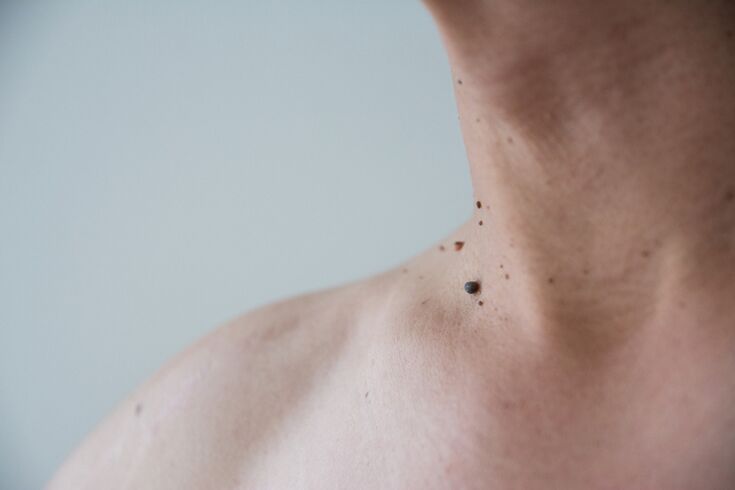
There are very few who would not face such problems as warts on the body. This growth can occur on the body in adolescents, adults and the elderly. Usually, warts are only cosmetics, which impair the appearance of a person. And only in rare cases do these formations pose a real threat to health.
What is a wart?
Our skin has a smooth surface. However, in some cases it can cause protruding skin growth. They are called warts. These are usually permanent formations that do not change for many years.
The mechanism of action of the wart is the growth of the top layer of skin. The sizes of the pictures range from 1 mm up to a few centimeters. This variable depends on the type of formation and its location on the skin. The combination of several warts is often seen. The color of the outgrowth of the skin is usually flesh, but they can take on other shades, such as pink or brown.
Medicines classify warts as benign tumors. They do not grow and do not get through the surrounding tissue.
In the International Classification of Diseases, the following codes are assigned to warts:
- B07 - viral wart,
- A63. 0 - gender black,
- L82 Seborrheic Keratoma
Most types of warts are viral, sexually transmitted diseases are sexually transmitted and seborrheic keratomas are senile warts that are not contagious in nature.
The following skin lesions should be distinguished from warts:
- nevi (mole),
- æsir,
- malignant tumors,
- basal cell carcinoma,
- broad warts caused by syphilis.
Some of these images can be life threatening. Therefore, if any suspicious formation of the body appears, it is necessary to consult a doctor.
Why do warts appear?
Viral infection is usually the cause of warts. The process of getting warts takes place as follows. Human papillomavirus enters skin cells and causes them to divide rapidly. As a result, growths or papillomas form on the skin. However, there are types of warts that the virus has nothing to do with.
Strictly speaking, papillomas do not always appear on the skin. These formations are often found on the mucous membranes, inside the bladder, in the larynx, on the cervix, and so on. However, it is customary to call the warts only papillomas that appear on the skin.
Warts can be located on any part of the body. However, some species have their favorite places. Warts, for example, usually form in the groin and anus; acorns prefer skin folds in the upper body.
The human papillomavirus does not multiply outside the body. However, it can last for a long time in hot and humid places. As a result, people can often become infected when they visit baths, saunas, swimming pools. But the virus does not live long in the open air - it is inactivated by the sun's ultraviolet radiation.
According to research, approximately 80% of the world's population is infected with some form of papillomavirus. There are a total of two hundred strains of these viruses. Some viruses are relatively harmless, others lead to papillomas and others can even cause malignant tumors. Some strains can be transmitted from person to person. As a result, certain types of warts can be contagious. But the spread of the disease from frogs and turf, as well as from other representatives of wildlife, contrary to popular belief, is impossible. This is because papillomaviruses in animals do not multiply in the human body.
You can be infected by a new type of virus through personal communication, by shaking hands, sharing household goods (for example towels), when visiting public places (swimming pools, baths, saunas, transport), through small wounds and sexually.
The papilloma virus that has penetrated the body does not always cause the appearance of the disease. Usually, the factors associated with the disease are stress, impaired immunity (for example, due to infectious diseases). At the same time, the virus can stay in the body for several years and wait in the wings.
Varieties of warts
Doctors diagnose several types of warts:
- ordinary (rude),
- youthful (apartment),
- benti (condylomas),
- senile,
- filamentous.
Nipples should be separated from warts of this type. Birthmarks usually do not protrude from the surface of the skin and are dark in color, although there are exceptions.
Vulgar warts
This type of wart occurs in 70% of cases. It is caused by the papilloma virus. On the outside, rude (normal) papillomas look like small semicircular formations on the surface of the skin. They are usually painless. The size of the pictures is from a few mm to 1 cm. Their surface is usually uneven, uneven, often resembling the surface of cauliflower. Color - flesh-colored, grayish, yellow-brown. Frequent positions - hands, face, fingers, lips, knees, elbows. Mucosa is rarely affected.
Ordinary papillomas can often go away on their own. The peculiarity of this type of papillomas is that they often grow not alone, but in groups. You can often find a large papilloma, around which grow small. If you remove the largest (mother) papilloma, the small ones usually disappear.
Common papillomas can occur at any age. They often occur in school-age children.
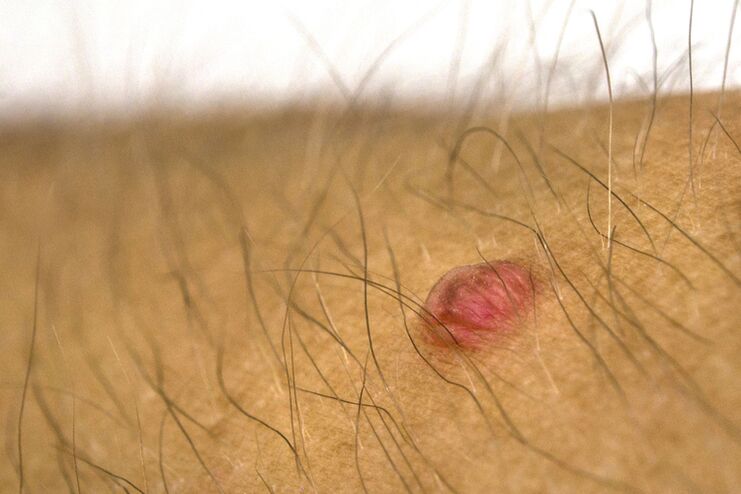
Adolescent warts
This type of papillomas usually occurs in children and adolescents. But in people of advanced age, they can also occur. These papillomas are also often referred to as flat papillomas. They are only 4% of all warts.
They can often be found at hand. They can also be seen on the feet and face, near the nails, between the toes, on the legs and on the neck. They are often linked to hormonal changes in the body. Like normal papillomas, they do not pose a significant risk and can disappear on their own. They do not usually cause physical discomfort, but they can worsen the appearance.
Flat papillomas are usually flesh-colored and protrude only beyond the surface of the skin (approximately 1-2 mm). They can reach 5 mm in diameter, but they are usually smaller than rude. Flat papillomas can appear near wounds and incisions. They are usually young papillomas with a smooth surface and uneven, though well-defined, borders. Due to the lack of stratum corneum on the surface, they may appear shiny.
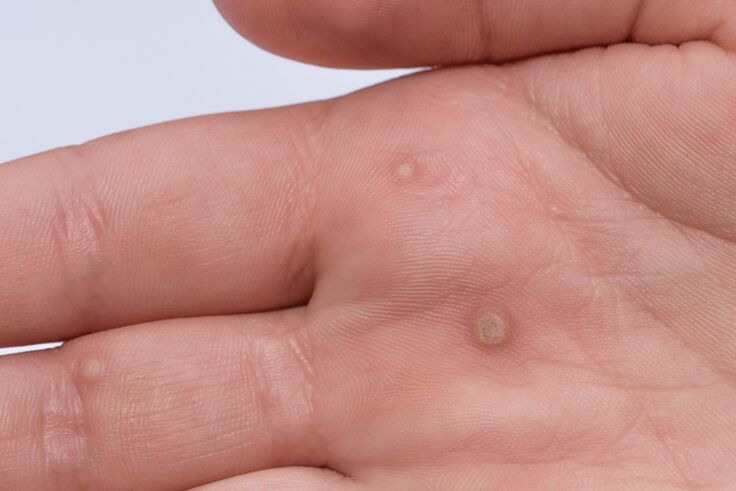
Plantar warts
This is an extremely uncomfortable type of skin growth that occurs on the feet. Sometimes they are crooked like grain. However, plantar papillomas have symptoms that distinguish them from grains. If the plant wart is damaged, it will usually bleed. For cereals, this phenomenon is not typical. Although on the outside, papillomas on the feet may look like skin - they are usually hard and keratinized. Their color is usually dirty gray, dark or dirty yellow with a brown tinge. Black dots may appear on their surface.
Usually one plantar wart is found on the foot. But they can also meet in groups, as well as grow together. Plantar papillomas grow not only outside the skin, but also deeper.
On the outside, warts of this type may look normal. They usually have a semicircular shape. However, if one constantly develops such skin formation, then it can take on a flattened image.
The appearance of papillomas on the soles has little to do with age, they can occur in both young people and the elderly. These formations can also be seen in children.
Plantar papillomas can cause discomfort and even severe pain when walking. When you step on such an outgrowth, you seem to be stepping on a small rock. On the outside, warts can sometimes look like thorns. That is why people call this type of papillomas spines.
At rest, these formations can cause itching. Like other types of papillomas, plantar warts develop under the influence of the papilloma virus. The virus often enters the skin of the feet from the environment. For example, it is not uncommon to catch this virus by going to a swimming pool without rubber boots. Uncomfortable shoes also contribute to the appearance of skin damage, as they often occur in places where shoes rub the feet. Excessive sweating and inadequate foot hygiene are also participants.
It is not recommended to touch papillomas on the soles of the hands by hand, as this will allow the virus to be transmitted to other areas of the skin.
Plantar warts treatment
Occasionally, papillomas of this type may disappear on their own. This happens in about half of the cases. But sometimes it takes a long time to wait for this moment and not everyone can afford it, especially if education is fraught with a painful feeling. If the growth of the foot causes sharp pain, does not allow to walk, then it must be removed. It is also necessary to remove education that is more than 1 cm. The transfer can only be carried out at the doctor's office.
If there is any doubt that the formation of the foot belongs to any type of papillomas, your doctor may perform a number of diagnostic procedures. This includes scraping and analysis of the stratum corneum, PCR analysis for the presence of the papilloma virus genome. An ultrasound is performed to determine the shape and size of the formation. Wart on the foot requires differential diagnosis from infected warts. However, extensive diagnostic procedures are not usually performed, as papilloma of the foot is not difficult to diagnose.
Sometimes you can try drugs to remove growth on the foot. To remove warts, preparations containing salicylic acid, killing agents, frozen aerosols and special patches are suitable. However, drug removal is usually not a quick procedure. You can quickly remove warts on the soles only with the help of equipment available in medical institutions. These can be methods:
- laser,
- surgery,
- electroplating,
- cryodestruction,
- radio wave.
Each type of procedure has its advantages and disadvantages. The surgical method, for example, is mainly used for large skin growths as it significantly hurts the skin.
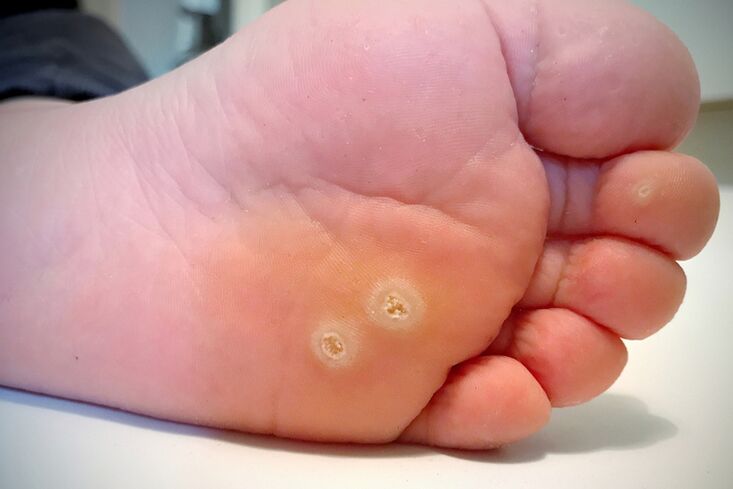
Genital warts
This is a special type of wart. They are usually found in the genital area. Their shape is also unusual, as they look like papillae (hence their name). However, warts can also have an irregular shape and resemble cauliflower or cockroach. The viruses that cause warts of this kind are usually sexually transmitted. Condylomas can also be seen on the mucous membrane, in the anus. Therefore, such warts are often called sexual or sexual. Condylomas are less common in the armpits, in women under the mammary glands. Warts are flesh of pink color. Sometimes several genital warts can grow together. Condylomas of this type can also grow in large sizes. Warts can cause a painful sensation during intercourse, defecation. If they are injured, they can bleed. Women with genital warts can also get cervical cancer.
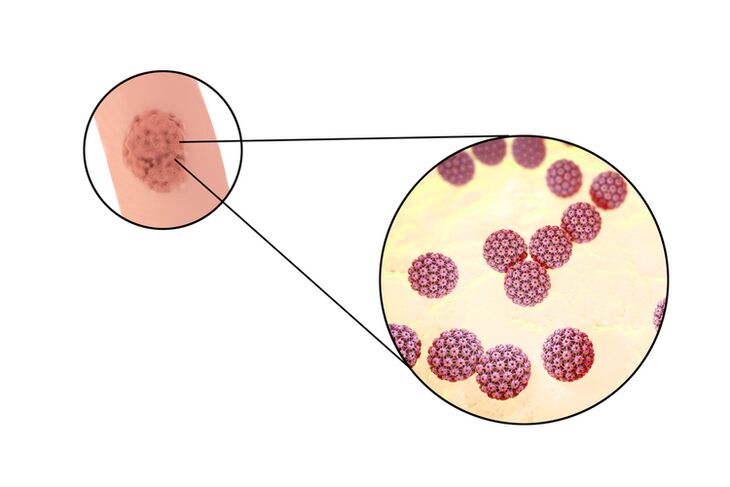
Filiform warts
This type of wart is extremely common. Filiform warts, or acrochords, often grow in large groups. Prefer acro-hard for areas with thin skin. This is the area of the armpits, neck, shoulders, eyelids, nostrils. May occur in the groin area, under the mammary glands in women. They do not usually disturb a person and do not hurt, but they can itch.
On the outside, filamentous warts look like long strands. However, acorns are often found with a thin filiform stem, to which a thick body is attached, usually spherical or hemispherical. They are also filiform. Such warts are called drooping.
Most warts of this type range from 1 mm to 5 mm. There are also chords that are larger than 1 cm. Sometimes several filamentous warts grow together.
Acrochords are rare in children. They are typical of people over the age of 35. And over the years, they usually increase. Among people over the age of 70, this wart is observed in 100%. The tendency to have a large number of acrochords on the body can also be inherited. Acrochords are often associated with overweight. In women, they can occur during pregnancy.
Threaded warts have one unpleasant property. If the wart is torn off, a new one will soon grow in place. Acrochords rarely go by themselves. Their appearance is promoted by increased sweating, less immunity.
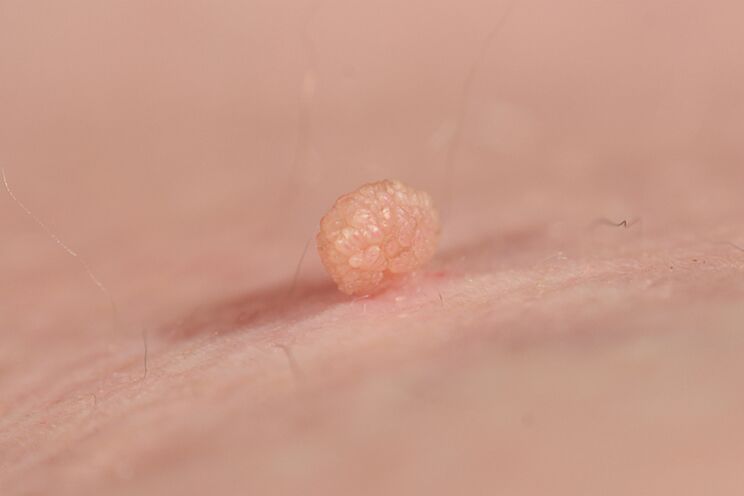
Senile warts
This type of wart has another name - seborrheic keratoma. It usually occurs in people over 60 years of age. Unlike other types of warts, senile keratomas are not caused by papillomavirus. Exact reasons for their occurrence have not been confirmed. Keratomas are most likely associated with age-related changes in the body. They develop from the basal layer of the epidermis and therefore are often called basal cell carcinomas. Although this is not quite the right name, because the real papilloma is caused solely by viruses. Heredity plays an important role in the onset of these tumors. Senile keratomas can often resemble melanoma. Therefore, if they occur, it is necessary to consult a doctor so he can diagnose. However, senile keratomas usually do not need treatment and do not turn into malignant tumors.
On the outside, keratomas look like pink or yellow papules with a thickness of 1-2 mm. Their size ranges from 2 mm to 3 cm. Sometimes warts of this type reach a size of 4-6 cm. Keratomas have oily, easy to remove crust. Their surface is uneven like corrugated cardboard. When keratomas are growing out of grass, they become like a mushroom cap and the color changes to black or dark brown. Their surface will be hard, they can crack.
Most often, keratomas are located on the neck and chest. Can be seen in groups. They appear less often on the hands and face. They do not exist on the mucous membrane. There are usually no more than 20 keratomas in the body. If a person has a lot of senile warts, it is often due to hereditary factors.
Senate keratomas do not go away on their own. People with excessive amounts of seborrheic keratomas in their body are advised to increase the amount of vitamin C in their diet to prevent new growth. You should also avoid exposure to direct sunlight, overheating, hypothermia, stress.
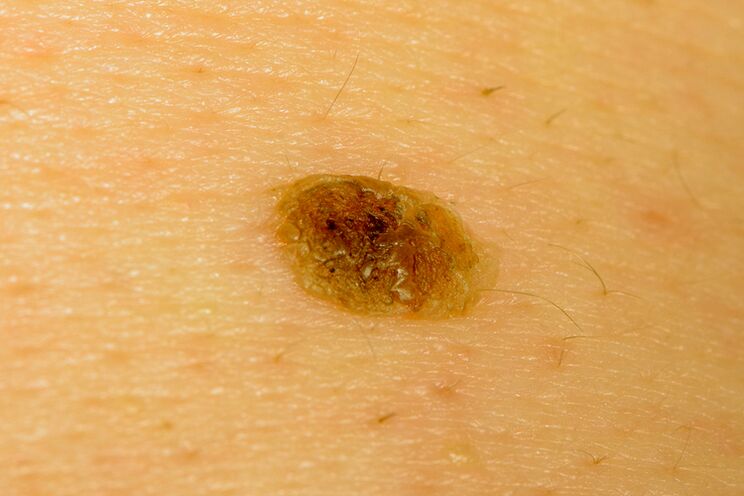
Treatment
Most papillomas are not a serious threat. But after injuries, they can hurt, bleed. After that, there is a risk of developing a malignant tumor. Although in papillomas and keratomas the risk of malignancy is much lower than in moles.
Papillomas are usually treated by removal (surgery, with the help of cold, high current or solvent). Therapeutic treatments are usually not as effective.
The indication for removal is tenderness in the formation of skin, its large size, bleeding, deformity, location in an uncomfortable place (for example, on the tip of the toe, on the soles of the feet, in the genital area). Warts can also be removed.














































































